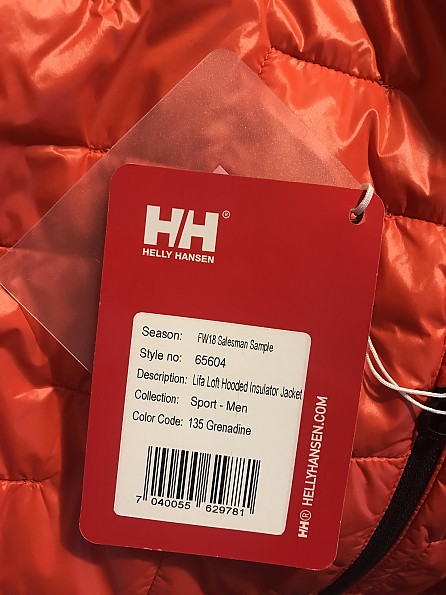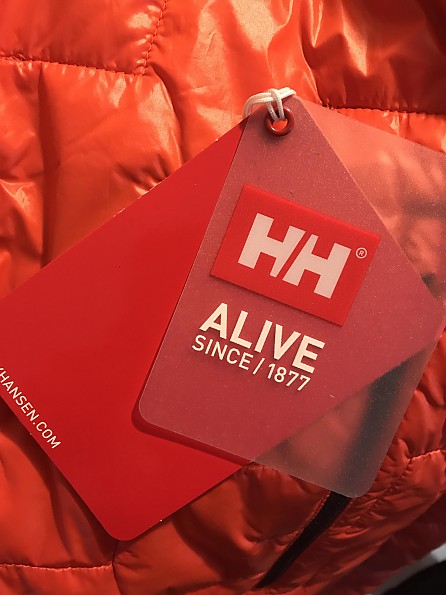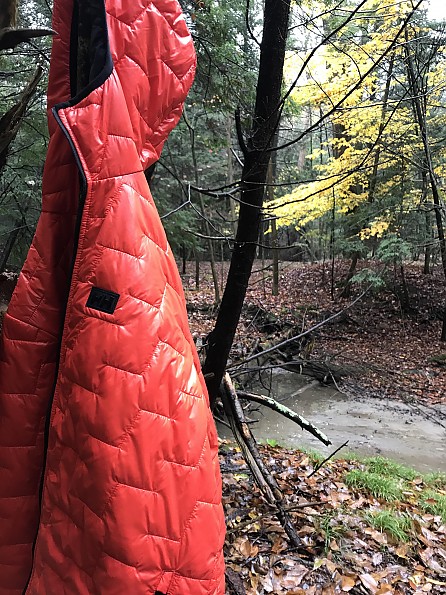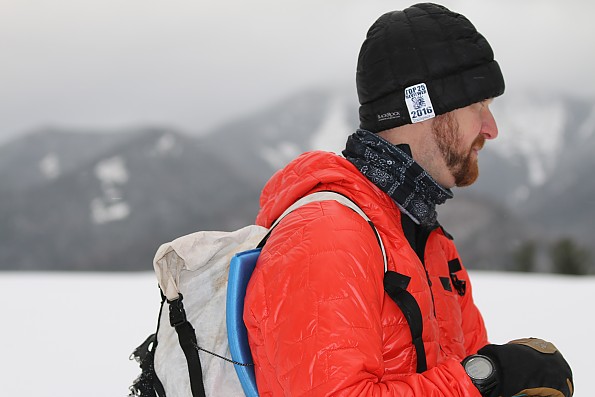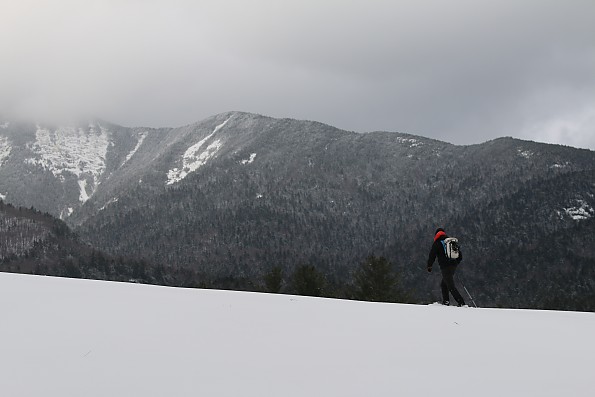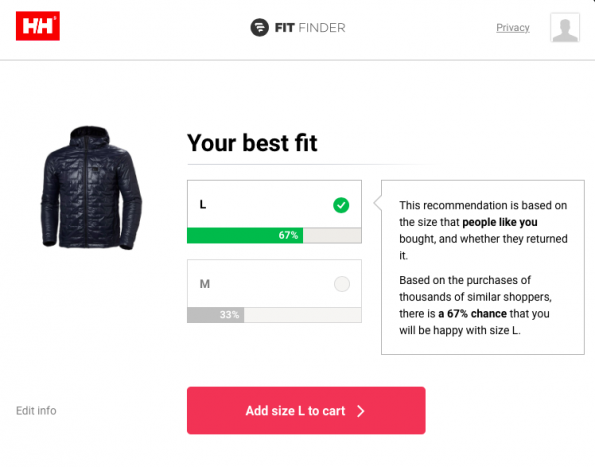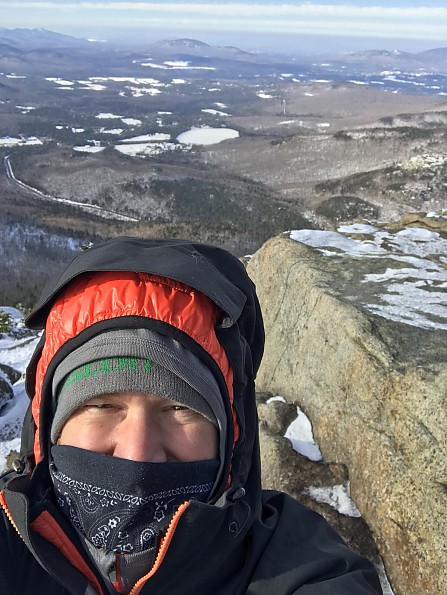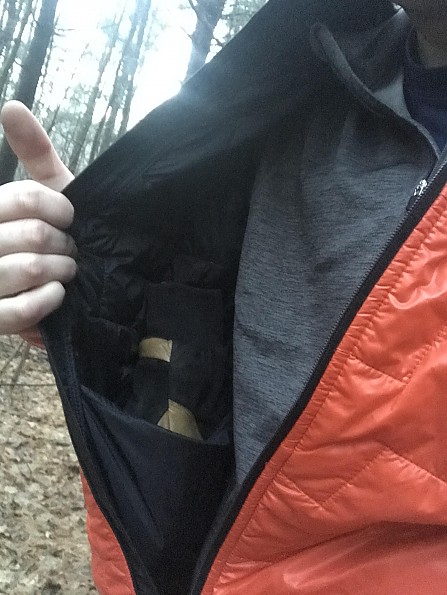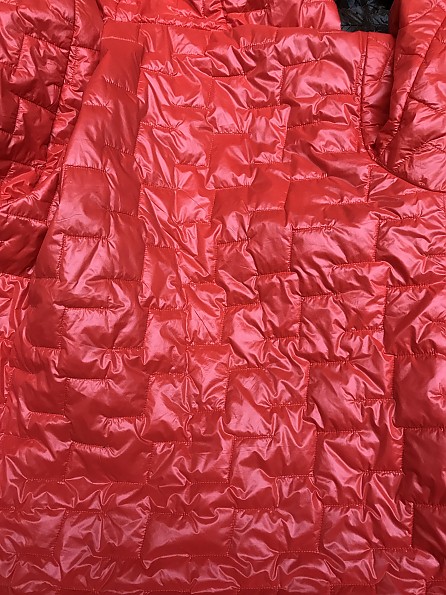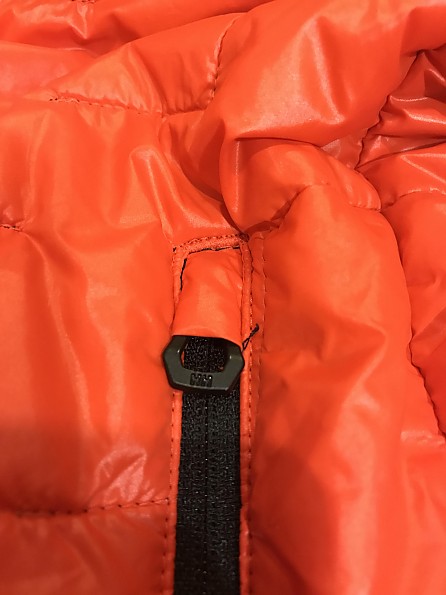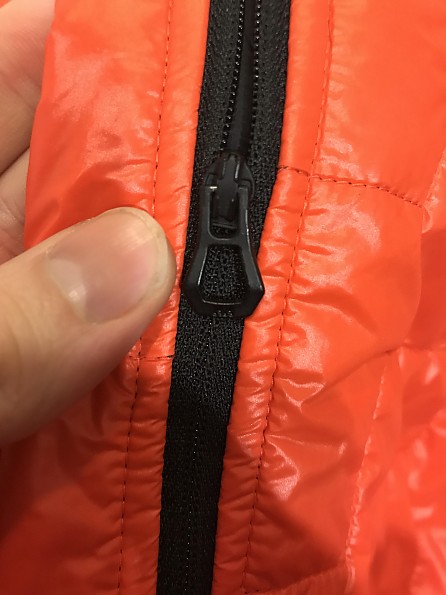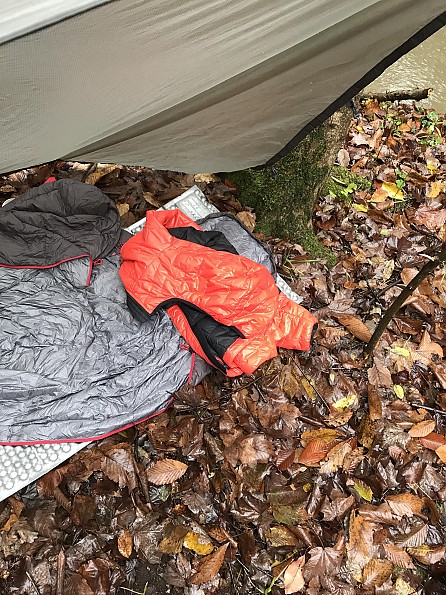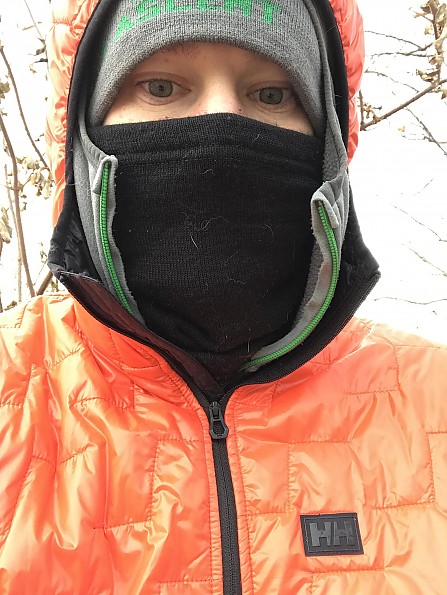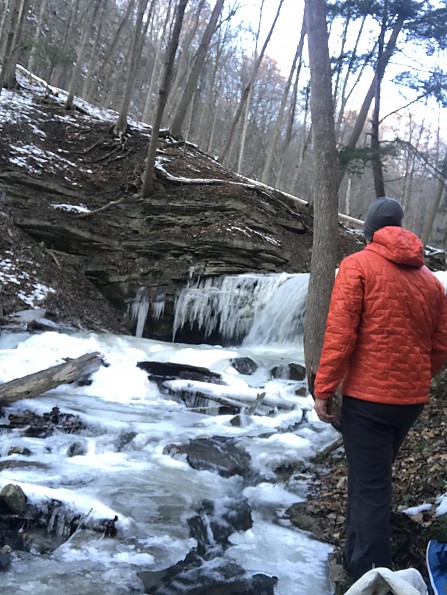Helly Hansen Lifaloft Insulator Jacket

The Helly Hansen Lifaloft Hooded Insulator jacket is a synthetically insulated jacket that partners HH’s Lifa fibres with Primaloft’s extensive knowledge of synthetic insulation in an attempt to mimic the weight and compressibility of down, while still providing the warmth when wet of synthetic insulation. The Insulator is highly successful in replicating the feel and warmth of down, but would benefit from further refinement in the fit and fabrics.
Pros
- Highly weather resistant shell (water and wind)
- Lightweight (13 oz for a men's large)
- Packable
- Large functional pockets
Cons
- Colour
- Short arm length and torso
- Fabric feels waxy against the skin
FIT AND COMFORT
The Lifaloft Insulator Jacket definitely leans towards a European fit. Tighter throughout the mid section and chest, this jacket errs on the side of form fitting. I would recommend sizing up if your primary intended use is as an outer layer. I ordered a size large (my usual in about 99 percent of jackets) and the Insulator fits me snugly with only a small amount of layering room underneath—a lightweight long sleeve or a thinner fleece at most.
If you are looking at this as a potential mid-layer, then order your regular size. If you're are looking for an outer layer or belay style jacket, then size up. For reference I fell firmly in the size large according to the HH Fit Finder.
There are two sections where this jacket comes up short, literally. The arms are at least two inches too short on me and if I am extending my arms my entire wrist is exposed. There are no stretch panels to account for any movement anyway, so the whole jacket pulls at the wrist. Most size large jackets fall at least around my wrist, so this is an abnormal issue for me. The hem is also a couple of inches too short, falling just at the waist line. I would much rather have it fall to around the hip.
ADJUSTABILITY
HH has attempted to keep the weight of this jacket at a minimum by cutting any superfluous extras. The wrists have an elastic cuff to seal out any drafts and they do a good job of remaining tight against a bare wrist as well as stretching to fit a glove cuff underneath. The hood also has an elastic lined edge but no other form of adjustment. It is a smaller, form fitted hood that will fit a baseball cap or toque, or could fit under a helmet. Because it fits a little tighter I haven’t felt the need for or missed the adjustments, as it won’t blow around in the wind.
The far too often overlooked inner dump pockets! Nice and oversized to keep your mitts or batteries warm or water bottle from freezing!
WEATHER RESISTANCE
The outer shell layer of the Lifaloft Insulator is definitely overbuilt. This can be either a positive or a negative, dependant on what you are looking for. It is incredibly tightly woven and has almost a waxy feel to it in the hand.
Upon further investigation and some correspondence with Helly Hansen I learned that the Lifaloft Insulator was made with 20D (both inner and outer) polyamide, with a Cire finish. Apparently a “Cire” finish by definition is a “highly glazed wax finish applied to fabric through a process of heat and pressure, known as calendering, which gives a wet or polished look.”
This explains the waxy feel to the fabric. It doesn’t feel sticky, but it’s not smooth either; it’s hard to explain, almost like a parchment paper feel. Although hard to quantify I would definitely expect this to be more durable than most lightweight insulated pieces, both due to the finish and the use of a higher denier fabric.
The Lifaloft Insulator Jacket is highly water repellent (it has a PFC-free DWR applied) and there is no need for a shell in cold weather as snow bounces right off. These are all wonderful characteristics if you are looking at it as an outer layer. As a mid-layer though it is not very breathable, so it traps a large amount of sweat. A bit of weight could have also been cut by using a lower denier fabric.
I’ve haven’t been able to soak the Lifaloft to the point of failure the way down would. Out of curiosity I tried dunking it, fully submerged, and agitated in my bath tub for about two minutes. A quick shake/wring out and it retained almost no moisture. I then wore it outside (around 0° Celsius/32° Fahrenheit that day, little to no wind) with just a cotton T-shirt underneath. There was no noticeable compression of the insulation and I was able to keep warm enough with just a light walk around the block.
According to HH, the Lifa insulation hates water so much that it absorbs 40 times less water than comparable polyester insulations. This test did nothing to disprove this, clearly.
BREATHABILITY
As mentioned above, if you are working hard you are not going to want to have this jacket on. It does not breathe and gives you limited venting options. Obviously you have the main zipper, but that’s it. There’s no mesh lined pockets or side fleece panels and certainly no underarm zips. Even moderate activity (a brisk walk) in moderate cold (let's say 5°C to -5°C / 41°F to 23°F) I’d have to take it off entirely.
In short, this jacket is not designed as, nor does it function as, an active insulation layer. The Lifaloft Insulator is much better at more stationary activities, ie. belaying, wearing around camp, ice fishing, etc.
WARMTH
The Lifaloft Insulator Jacket is quite warm given its weight. No insulation weight, or amount, is given on the website so it’s hard to give a direct comparison. The most I could narrow it down to would be to compare it to a 60 g/m synthetically insulated jacket.
It is warmer than both the Inov-8 Race Elite 260 and the Craghoppers Voyager Hybrid, but not as warm as the Wild Things Gear Insulight Jacket (I use these three as examples as all three are synthetically insulated and my thoughts, for comparison, on each can be found here in my reviews). This is where the dense weave of the shell fabric comes in handy in terms of deflecting any wind or precipitation.
LAYERING
The Lifaloft Insulator Jacket layers quite well under other pieces, with the caveat that it could be a little better. The outer face fabric feels tacky to the touch so it does slide under a shell, but it could be both a thinner denier (which would also further lighten a light jacket to begin with) and with a more matte finish. With that said it does work well as is.
The fit of the jacket is slim and the shorter hem and sleeve length actually come in handy here, as your winter shell will be a little longer in length (hopefully) so not all layers end, and stack on top of each other, at the same point.
The tighter fit doesn’t afford a ton of room to fit clothing underneath, any standard base layer will fit though. I’ve experimented between a thin, synthetic t-shirt on cool days, to a thicker long sleeve merino shirt on colder days, and both work equally as well. Something like a Patagonia R1 will fit as well if you're intending to use it as an outer layer, but any more than that will become restrictive.
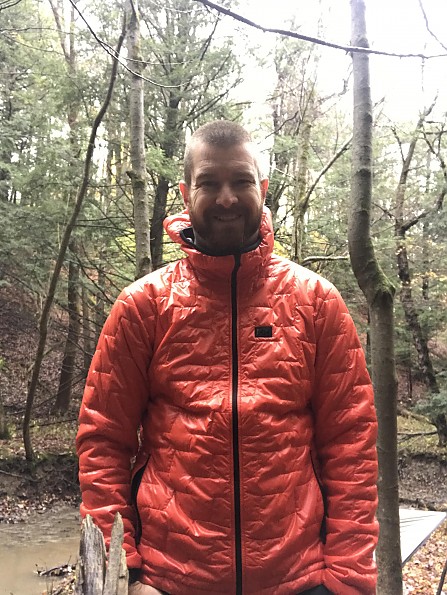
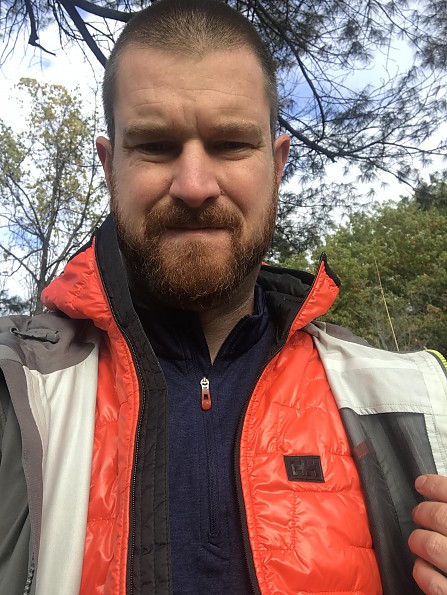 This one's called the "Triple Trailspace Test" (Montane Dart, Helly Hansen LifaLoft, Outdoor Research Interstellar)
This one's called the "Triple Trailspace Test" (Montane Dart, Helly Hansen LifaLoft, Outdoor Research Interstellar)
CONSTRUCTION AND DURABILITY
With any thinner, lightweight layer a reasonable amount of care must be taken, but the odd brush with a branch, backpack straps, and repeated packing have done little, to no, damage thus far.
There are a lot of seams on this jacket, which may become potential fail points; I'm not sure if they are cosmetic, as I would think the nature of the synthetic insulation would allow you to use less stitching, but so far so good.
The zipper is YKK brand and moves smoothy with no snagging, although the pull could be a little larger to help when using with gloves, which you assume would be a lot on an insulated jacket.
PACKABILITY
This jacket is largely successful in replicating down's ability to pack down, and spring back up. I most often cram it down into my pack, but just for reference sake it does fit (easily) into a 4 litre stuff sack. When you pull it back out it lofts up quickly with a little shakeout. I do wish you had the ability to stuff it into its own pocket for storage, as I just lose stuff sacks too easily!
I wish it also was able to store in its own pocket, or came with a stuff sack as it is quite light and compressible.
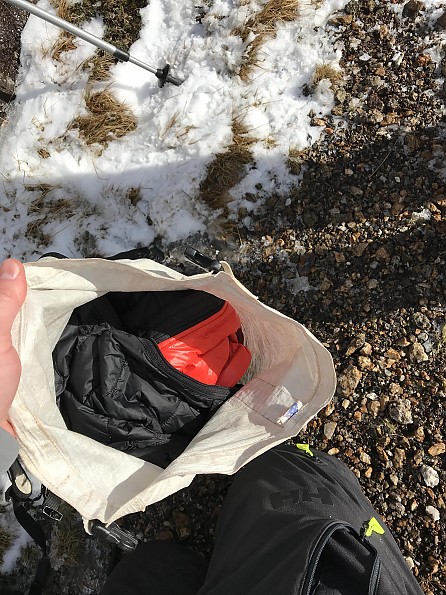
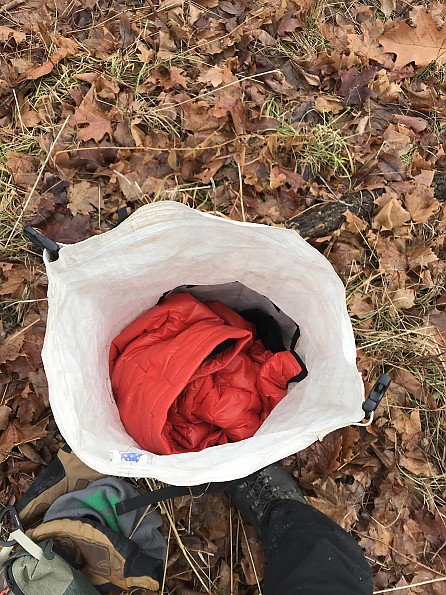 Most often just stuffed it in like so...
Most often just stuffed it in like so...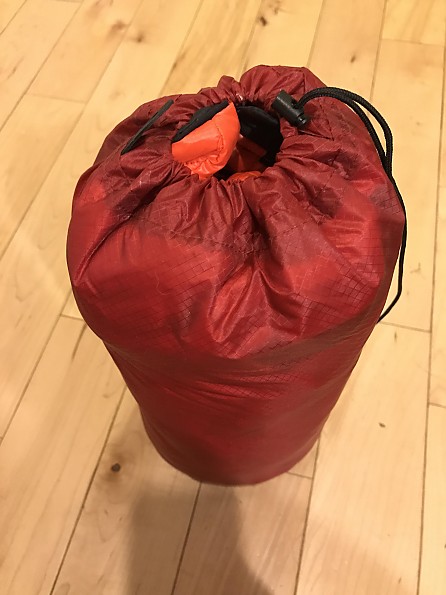 4L stuff sack for reference, could go a little smaller if needed
4L stuff sack for reference, could go a little smaller if needed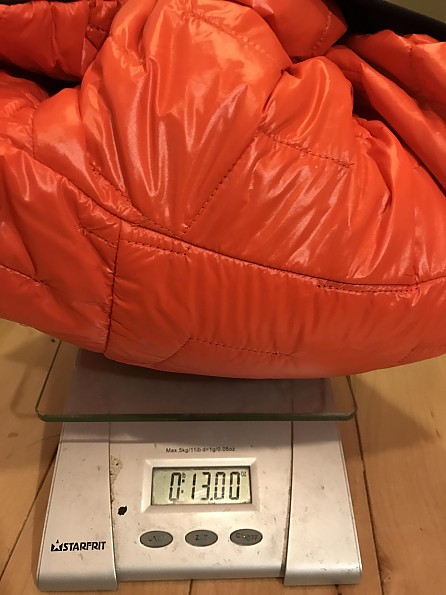 Weighs a quite respectable 13 oz (especially light for a synthetic jacket)
Weighs a quite respectable 13 oz (especially light for a synthetic jacket)
EXTRAS
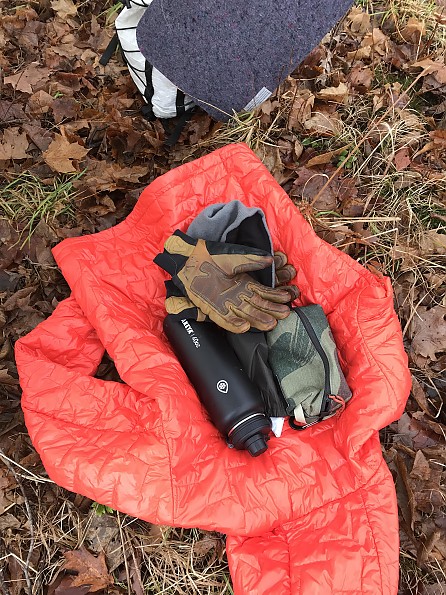 Very easy to find, too easy to find. My eyes hurt. This makes neon look subtle.
Very easy to find, too easy to find. My eyes hurt. This makes neon look subtle.
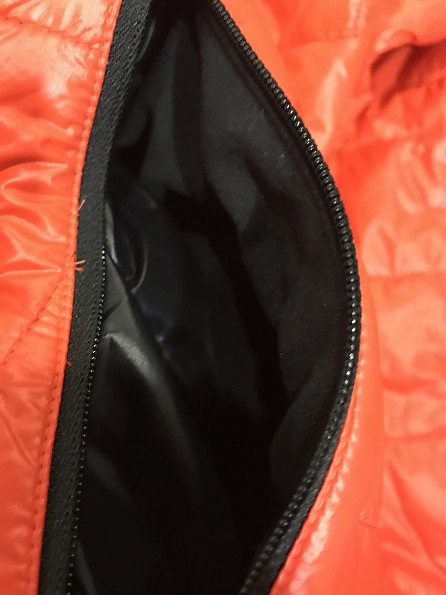 Hard to see, but there is a fleece lining on the pockets.
Hard to see, but there is a fleece lining on the pockets.
CONCULSION
The Helly Hansen Lifaloft Insulator Jacket brings a lot of the benefits of down to the synthetic world, mainly weight and packability, but could use some re-tailoring of the fit (couple inches added to sleeve and hem length) as well as a lighter, smoother fabric. Overall I have really enjoyed testing the Lifaloft Insulator Jacket.
BEST FOR
The Helly Hansen Lifaloft Insulator Jacket would be best for someone pursuing colder weather, low exertion activities who has a shorter torso and arms.
My thanks to Trailspace and Helly Hansen for the opportunity to test the LifaLoft Insulator Jacket!
CONDITIONS
The Lifaloft Insulator Jacket has been used over a period of four months in Ontario, Canada, and the Northeastern United States, from the end of October 2018 to January 2019. Temperatures have ranged from -26°C to 5°C/ -14°F to 41°F, with varying rain, sleet, snow, hail, and wind speeds.
Background
I have owned/used many synthetically insulated jackets throughout my years recreating in the outdoors (many have been reviewed here on Trailspace for reference). I often prefer synthetically insulated pieces to down for their reliability should they become soaked with moisture.
Source: received for testing via the Trailspace Review Corps
(Sample for testing provided by Helly Hansen)
Your Review
Where to Buy
You May Like
Specs
| Men's | |
|---|---|
| Price |
Current Retail: $150.00-$200.00 Historic Range: $100.00-$200.00 |
| Women's | |
|---|---|
| Price |
Historic Range: $79.98-$220.00 |
| Kids' | |
|---|---|
| Price |
Historic Range: $56.00-$104.99 |


